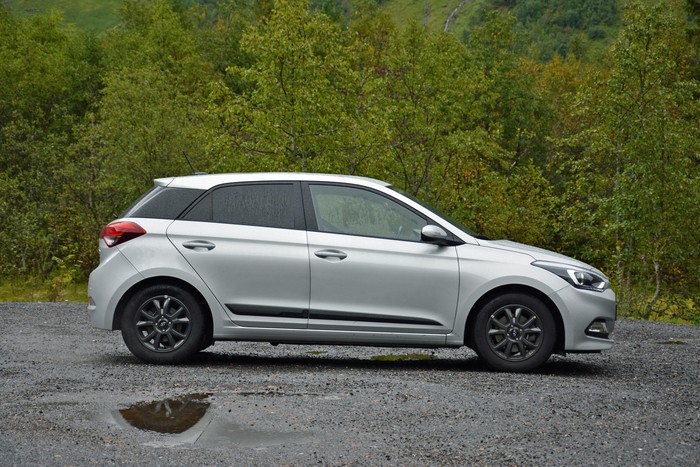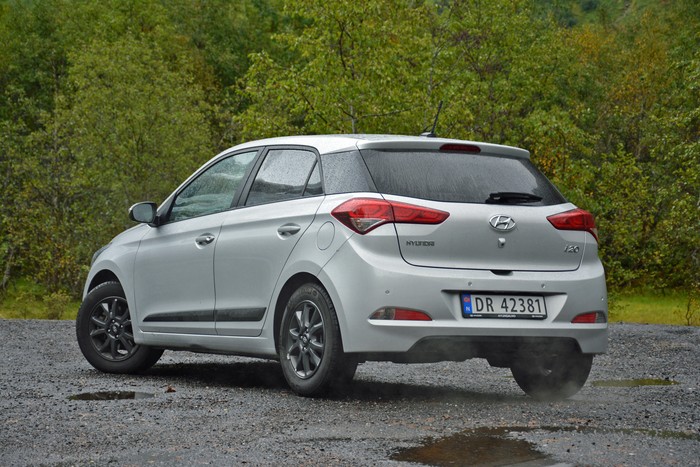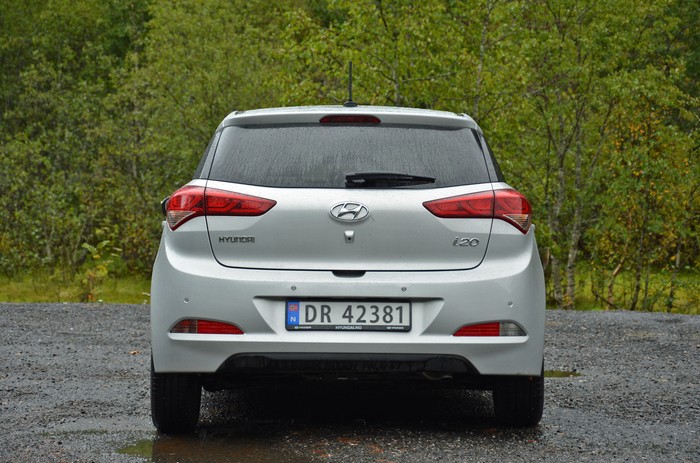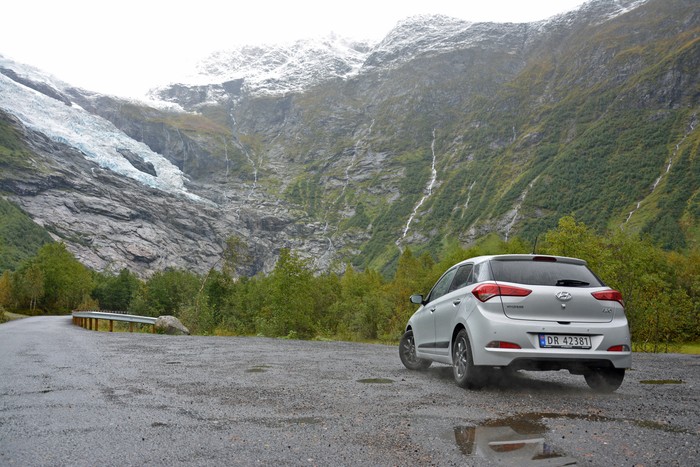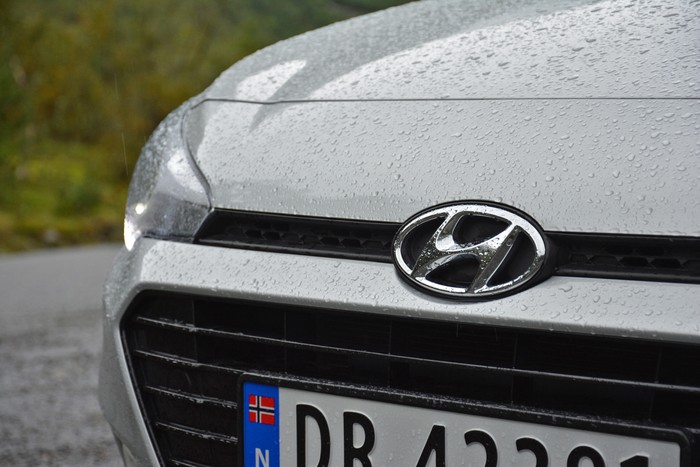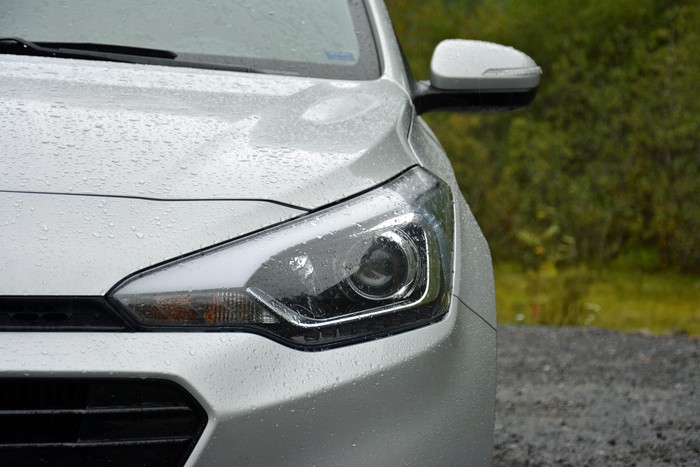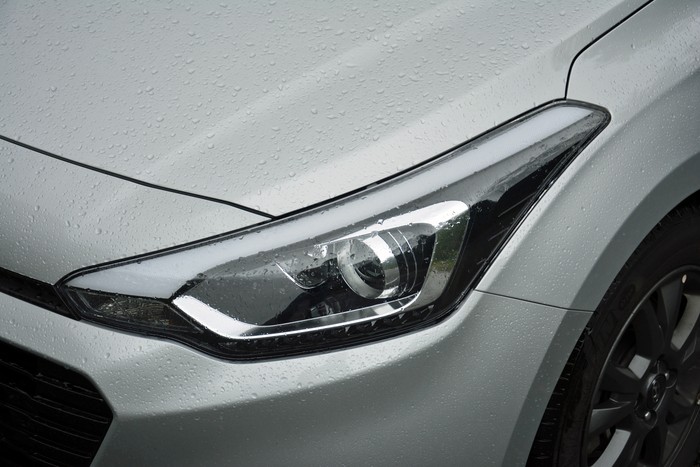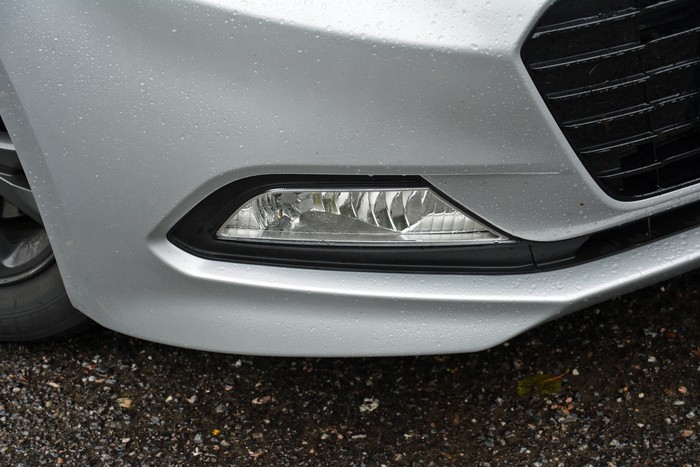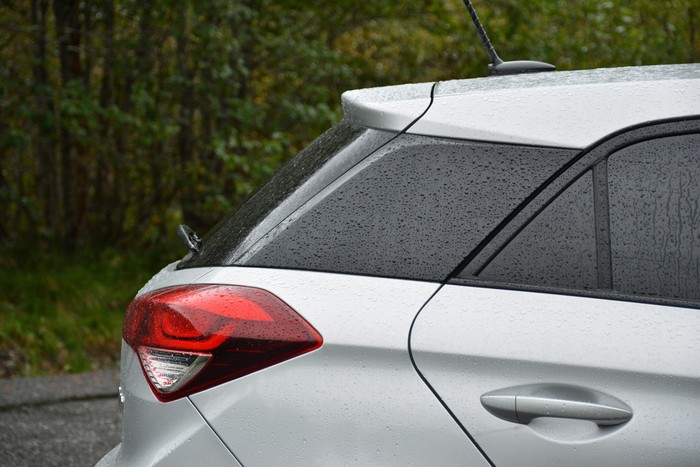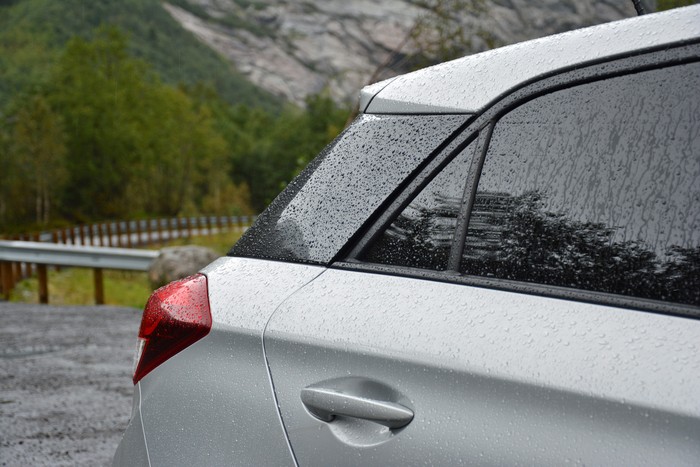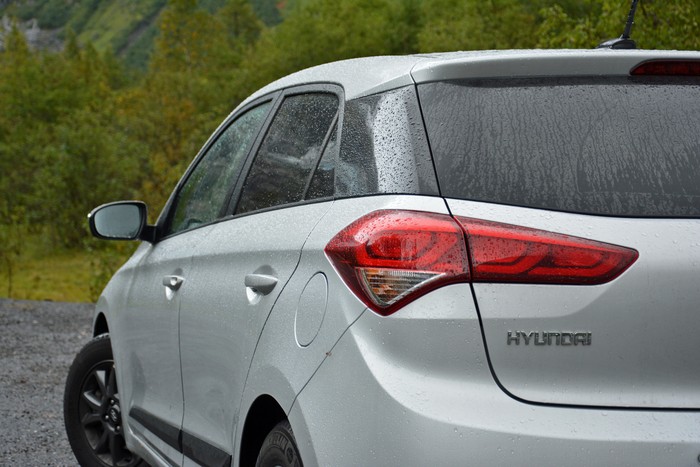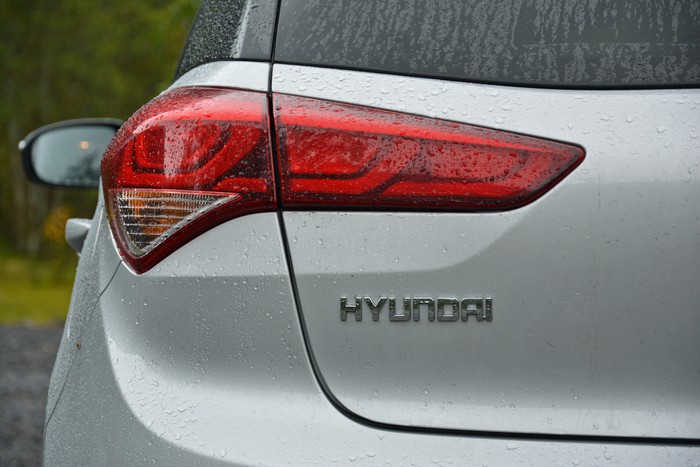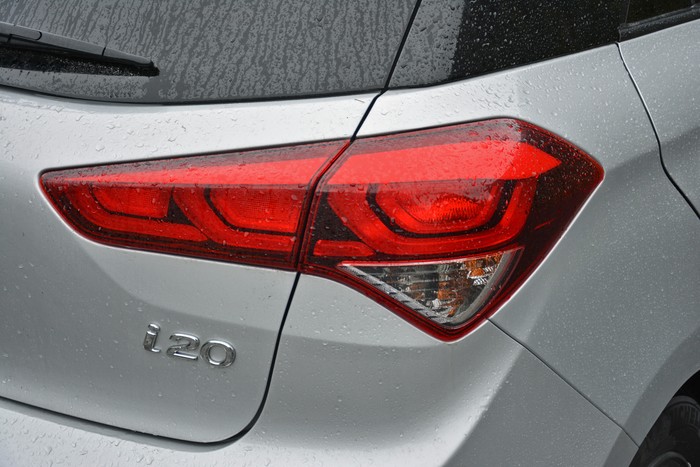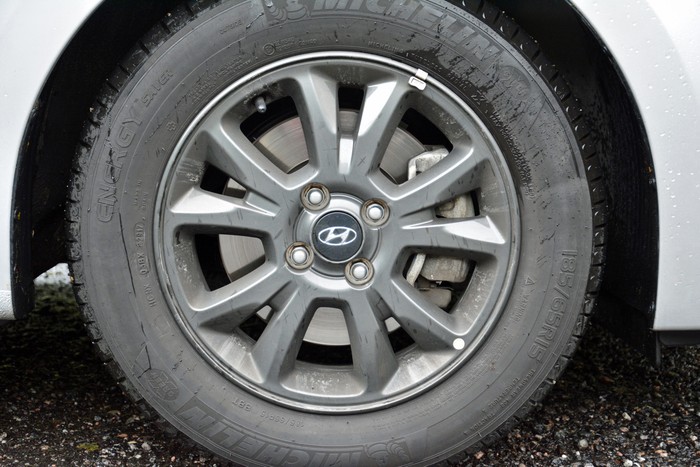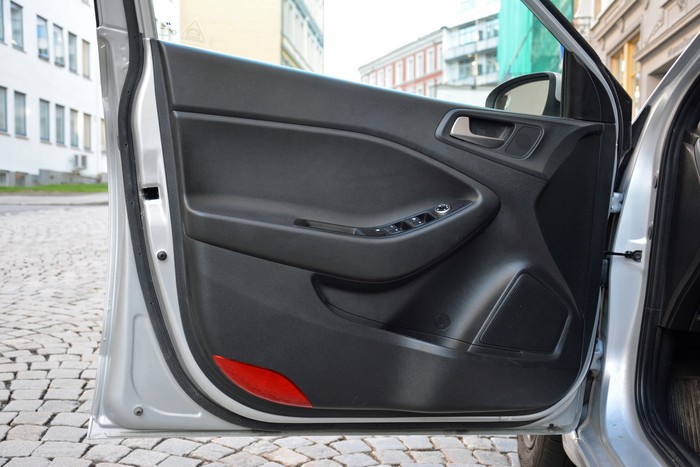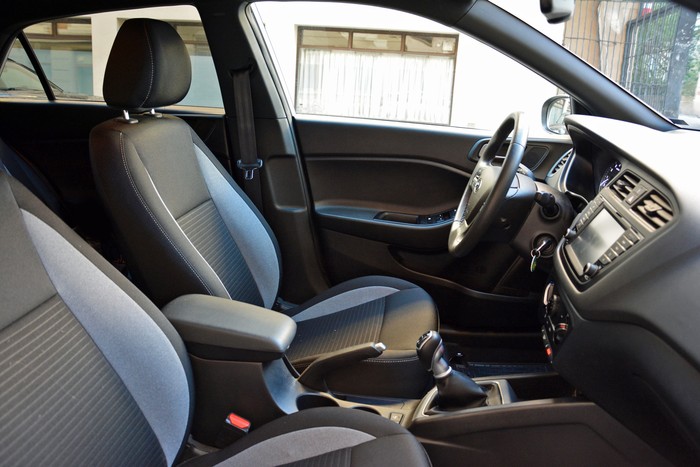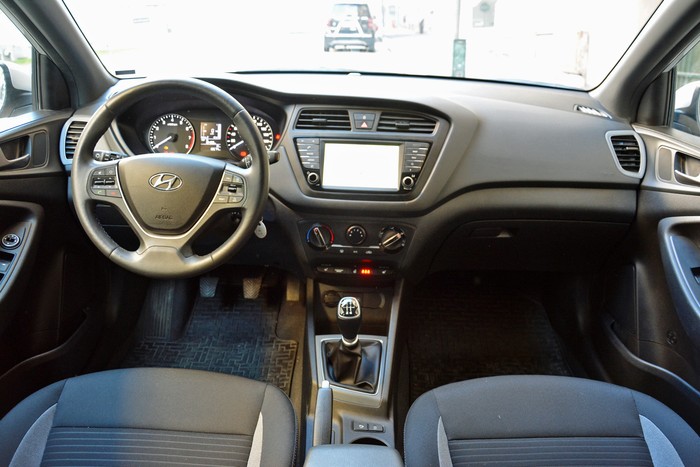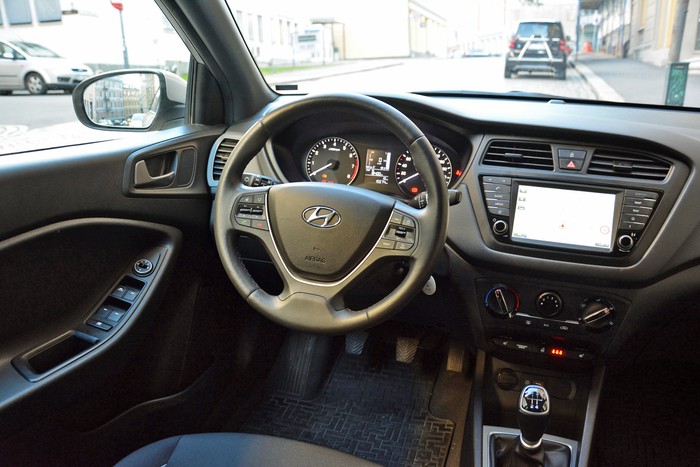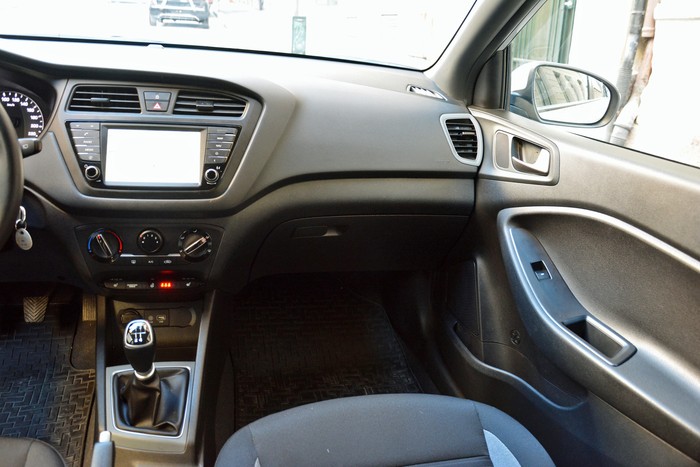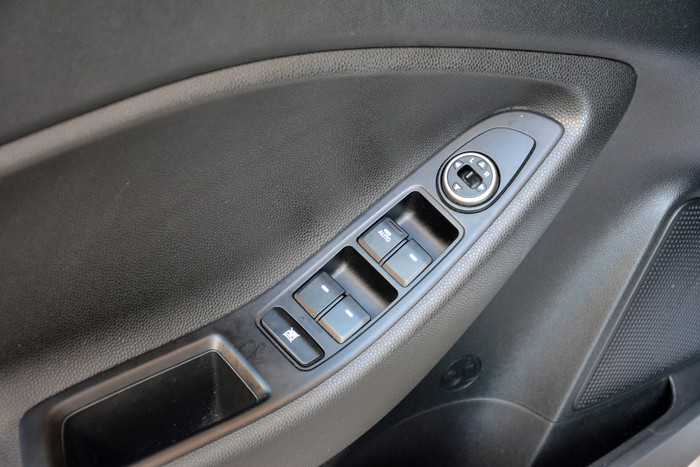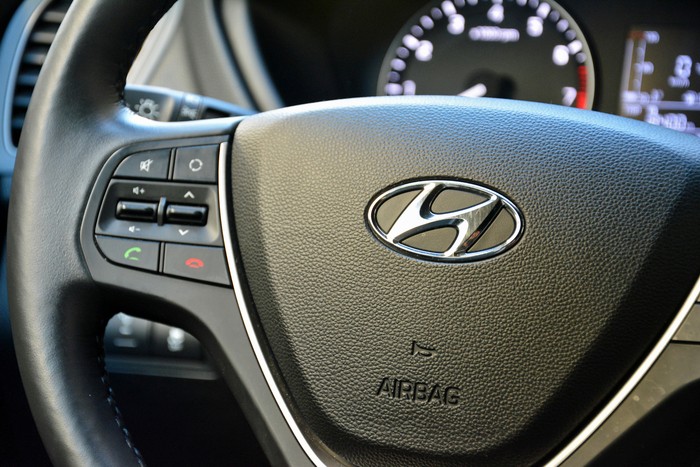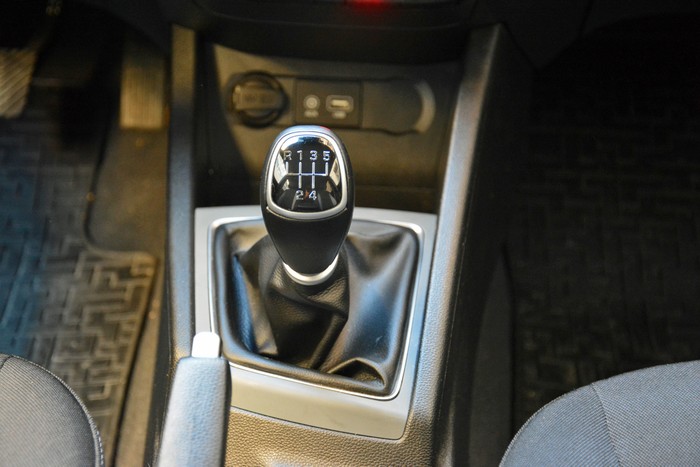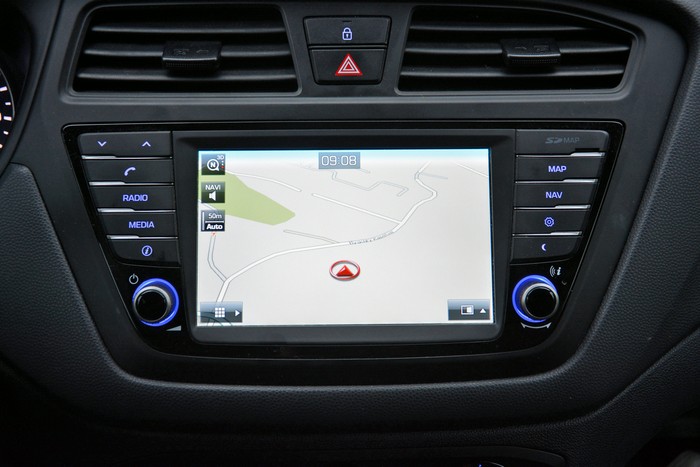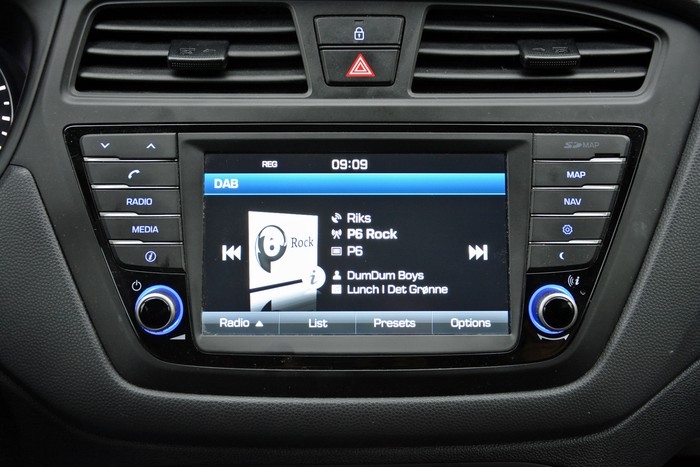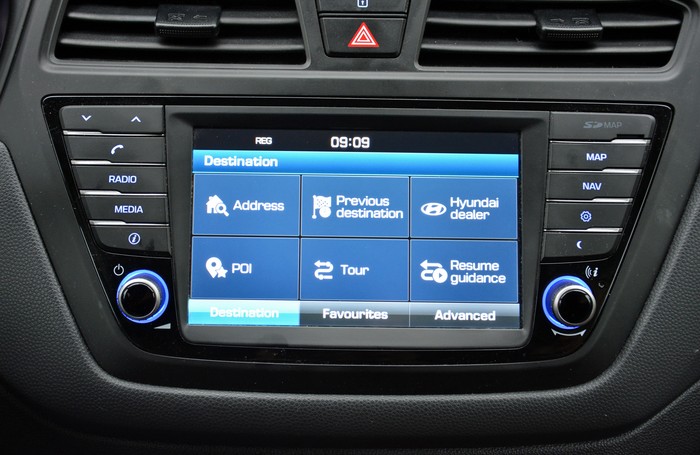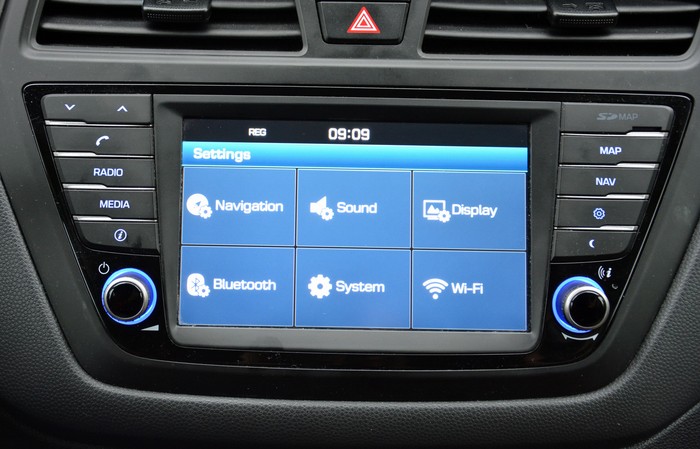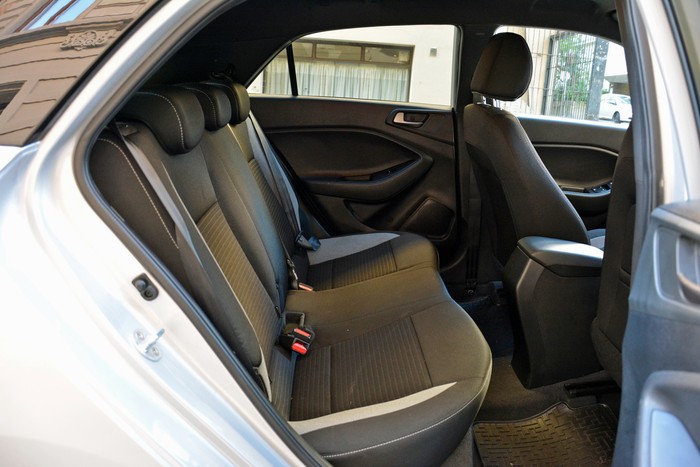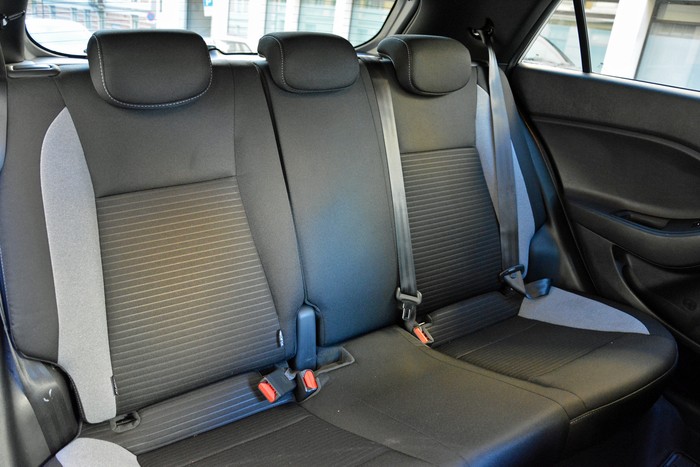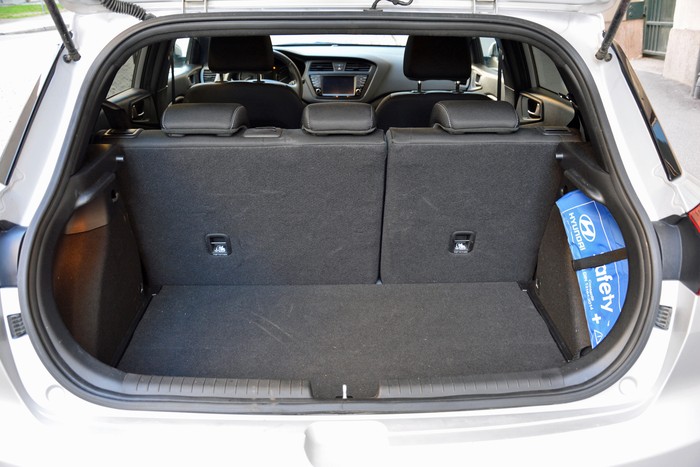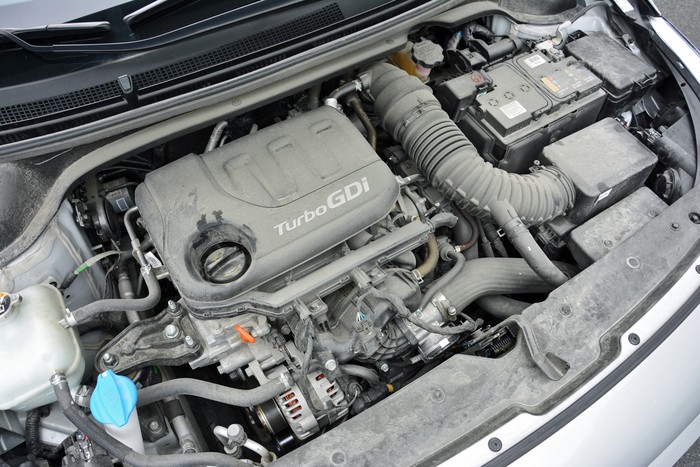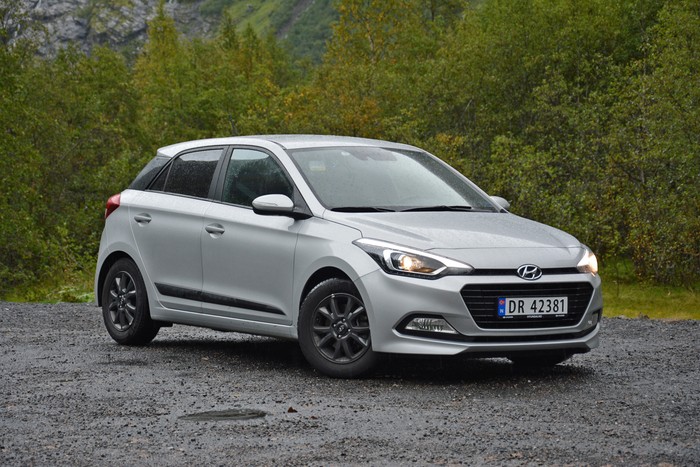
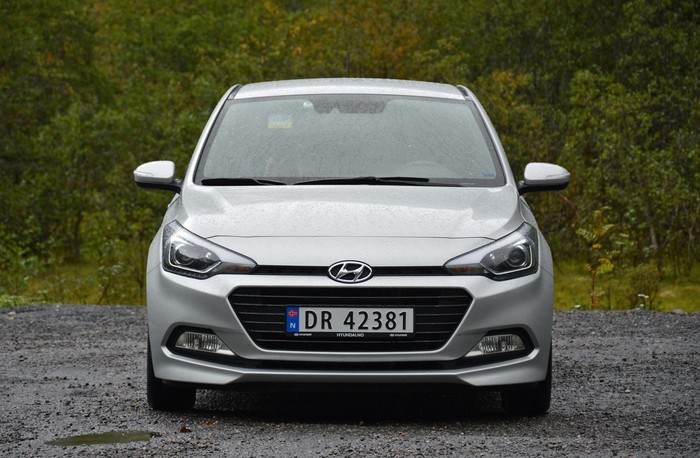
Review: 2018 Hyundai i20
We take a road trip in the Accent hatchback Hyundai won't sell here.
Hyundai's American division stopped offering the hatchback variant of the Accent when it introduced the current-generation model in 2017. Buyers seeking an Accent with a fifth door instead of a trunk lid are now encouraged to take a look at the Kona, which is more of a tall, rugged-looking hatchback than a true SUV.
The Accent hatchback that we would have gotten had the model returned to American showrooms for a new generation exists in many global markets as the i20. Are we missing anything? We took a 2018 Hyundai i20 on a trek across Norway to find out.
What is it?
Pardon our dust; Norway's wet, often unpredictable climate makes for beautiful panoramas but it seriously complicates the task of keeping a car clean for photos. Imagine that the sheet metal is dry and squeaky-clean and you'll notice the i20 falls in line with Hyundai's recent design language without completely copying an existing car like the bigger Elantra GT (sold as the i30 in Europe), the smaller i10, or even the Accent. All of the main styling cues that define a Hyundai in 2018 are accounted for, including the elongated headlights and the cascading grille. The proportions mirror what you'd expect from a car jettisoned in the same market segment as the Ford Fiesta. Designers jumped on the now-departed bandwagon of blacking out the C-pillars to create the illusion of a floating roof. The i20 lacks the Kona's sheer boldness, for better or worse. It's just stylish enough to avoid being labeled boring or stylistically offensive.
Closely related to the Kia Rio, the i20 slots near the bottom of the Hyundai hierarchy in Europe and many other markets. In terms of positioning, it's to the Elantra GT what the Fiesta is to the Focus and the Honda Fit is to the Civic. It's not the smallest Hyundai, though. That distinction goes to the aforementioned i10, a truly tiny four-door hatchback positioned as an alternative to the Volkswagen up!, the Peugeot 108, and the Renault Twingo, among other models North American buyers could mistake for a Matchbox car.
Pricing varies from market to market, and exchange rates are never as straight-forward in real life as Google's widget suggests. In Germany, the i20 starts at ‚'¨12,800 (about $15,000). To add context, Volkswagen charges ‚'¨18,075 (roughly $21,200) for an entry-level Golf.
The interior
The i20 offers space for five passengers, though we'd recommend saving the middle seat for carrying small children or a six-pack of beer and only cramming an adult in it as a last resort. Stick to four or fewer and the interior is spacious considering the car's relatively small footprint. Hyundai scattered several storage bins around the cabin, including one in each front door that's big enough to store a 16-ounce water bottle. We didn't feel cramped during our week-long trip with two people- your author included - on board and everything we needed for a long day's worth of driving (like an MP3 player and a cup of coffee) was never far from reach. The trunk is big enough for a large suitcase plus a few smaller items like a backpack, snacks, and a camera bag.
Many of the parts within the driver's line of sight and touch are made from materials that really aren't bad at all considering the i20's price point. It's a breath of fresh air in this segment. Some bits and pieces feel cheap - for example, the bottom parts of the front door panels might as well be made from melted Playmobil sets - but that's par for the course on this end of the new car spectrum, we can't fault Hyundai.
Nearly every aspect of the infotainment system is as average as it gets, including the resolution and the response time. The software is fairly easy to navigate because there are hard buttons on either side of the color touch screen for quick access to functions like the radio, the media options, and the navigation interface. We liked that the menus are relatively shallow, you don't have to dive six levels deep to program a multi-destination itinerary into the navigation. However, zooming in and out of the map requires using the knob on the right side of the screen, which isn't nearly as user-friendly as the pinch-to-zoom motion we've all gotten used to in recent years thanks largely to Google and Apple.
We noted several other annoying traits in the i20, including some that we can likely chalk up to personal preference. We absolutely never agreed with the automatic wipers on when to wipe the windshield. And, on an oddly similar note, the automatic headlights took too long to turn on. After entering a tunnel, we often lost radio reception before the i20 realized "oh wow, it's dark, I should turn my lights on.‚ÄĚ
The drive
Our tester came with a turbocharged, 1.0-liter three-cylinder engine tuned to make 99 horsepower at 4,500 rpm and 127 pound-feet of torque from 1,500 to 4,000 rpm. It spins the front wheels through a five-speed manual transmission. Hyundai offers a 1.2-liter four-cylinder as an entry-level engine, while the list of options available to buyers who select the triple includes a dual-clutch automatic gearbox.
We've rarely praised three-cylinder engines. Many of the ones available in Europe make the car they're stuffed in feel like a 25-year old riding lawn mower that needs a tune-up. They sound like a loud, angry sewing machine. They're poky and hate to be rushed. They vibrate like a Massey-Ferguson 135 at idle. From this vantage point, what's there to like?
Hyundai's triple sings a different tune. There's no mistaking it for a four-cylinder at start-up, especially on a cold morning, but the noise quickly quiets down and settles into a much more tolerable note. It doesn't wobble when it idles, or if it does it refrains from sharing its vibrations with the occupants.
Our trip took us from Oslo to Bergen and back with countless detours and zigzags between the two cities. Driving in Norway is bittersweet. The roads are scenic, well-paved, engaging, and we rarely encountered heavy traffic. It sounds like the Norwegians should put a Miata on their flag, right?
That's what we thought, too, until we realized speed cameras grow on the side of the road like mushrooms, police officers watch the road network like a hawk circling around a prey, and the fines for speeding are eye-wateringly expensive. We reluctantly set the cruise control to 80 kilometers per hour (50 miles per hour; the speed limit across most of Norway), sat back, and enjoyed the view. The i20 obliged. The 1.0-liter is happy to cruise along in fifth gear and its torque got us up moderately steep hills without asking for a downshift into fourth. Hyundai did a good job of spreading out the gears and every cog has its purpose. We were never tempted to skip second or fourth like we've done while accelerating in other comparably-sized cars we've driven recently.
Our consolation prize was the quick realization that we wouldn't have had a blast behind the wheel even if we had decided to throw caution to the wind and hoon the hell out of the i20 for a few miles. There is zero steering feel. None. Zilch. It's simply not there; you may have better luck looking for a 3.0-liter Alfa Romeo V6 hand-cranked by a troll under the hood. You turn the steering wheel, the car changes direction, but what happens between the two - and any information the tires pick up from the pavement - is a complete and utter mystery. That's perfectly fine, the i20 is not sold as a driver's car and it doesn't need to be one, but buyer beware: this isn't a Mazda2. It's not a car you'll ever bond with.
Ease of use is the i20's mission in life. It comes onto its own in cities. The clutch pedal is super light, the gear lever is easy to operate, and the effortless steering makes maneuvering in a tight parking garage or between the tour buses beached in downtown Oslo a breeze. The suspension soaks up small imperfections in the road but lets bigger bumps filter through. It's comfortable, though, and it keeps body roll in check. We found the brakes to be adequate for every situation we needed to stop in.
The triple has one more trick up its sleeve. According to the trip computer, we averaged about 41 miles per gallon over the course of our roughly 1,100-mile trip. The i20's impressive fuel economy was a real boon. Don't assume gasoline is cheap in an oil-rich nation like Norway. It's actually slightly more expensive than in a country like France that has never seen a nodding donkey.
The verdict
The Hyundai i20 keeps its promise of delivering easy, stress-free motoring without making anyone traveling in the car feel like they've been sent to a four-wheeled jail cell. We wouldn't hesitate to recommend the i20 to anyone seeking a small, affordable car, whether it's a college student, a young couple, or an older driver who needs a city roundabout. The only condition is that "driving engagement‚ÄĚ must be low on (or entirely absent from) the buyer's list of priorities.
Would it sell well in the United States? Not a chance, but not because it's a bad car by any means of measurement. Simply put, the i20 isn't what the average buyer is currently looking for due to its small size and, frankly, its lack of ground clearance and black plastic trim around the wheel arches. In other words: it's not a crossover.
Photos by Ronan Glon.
